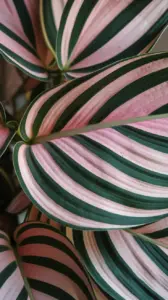Biological Features of Alocasia Polly
Alocasia Polly boasts unique and striking characteristics that make it stand out. This plant a member of the Araceae family, is notable for its arrow-shaped leaves. These lush, green leaves feature prominent veins, which add to their aesthetic appeal. Furthermore, young leaves appear as elegant spirals during growth, enhancing their beauty. The plant is native to tropical regions, specifically Southeast Asia. This origin contributes to its preference for warm and humid environments.
Alocasia Polly typically grows between 1 to 3 feet in height, making it suitable for various indoor spaces. Moreover, it produces small, creamy-white flowers under the right conditions. However, its foliage remains the main attraction for plant enthusiasts.
| Feature | Description |
|---|---|
| Leaf Shape | Arrow-shaped and glossy green |
| Average Height | 1 to 3 feet |
| Flower Color | Creamy-white |
| Native Region | Southeast Asia |
| Light Requirement | Bright, indirect light |
| Watering Needs | Regular but moderate watering |
Moreover, Alocasia Polly prefers well-draining potting soil. This helps prevent root rot and ensures healthy growth. Also, during the growing season, which is spring and summer, fertilizers can enhance growth. However, feed sparingly in fall and winter.
In conclusion, understanding Alocasia Polly’s biological features is crucial for its care. Its unique characteristics make it an exceptional choice for plant lovers.
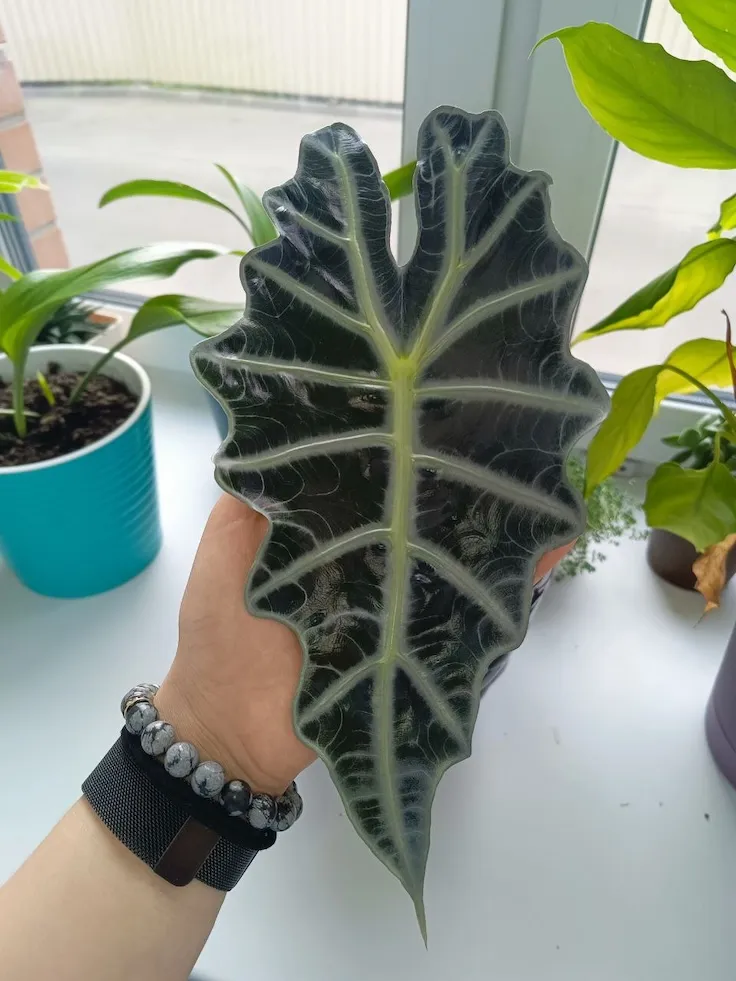
History and Cultural Significance
The Alocasia Polly is not just a beautiful houseplant; it holds rich history and cultural significance. Originally hailing from Southeast Asia, this plant has captivated many with its striking leaves. The unique shape and prominent veins make it a favorite among gardeners. Moreover, it signifies strength and resilience in various cultures.
Historical Background
In many Asian countries, Alocasia plants have been cultivated for centuries. Traditionally, they were grown for their ornamental value. Furthermore, in some regions, these plants symbolize prosperity and good fortune. In the Philippines, indigenous people often utilized parts of the plant for various medicinal purposes.
Cultural Insights
This houseplant has intertwined itself with cultural practices. For instance, in Indonesia, Alocasia symbolizes creativity and fertility. Its bold foliage often enhances both homes and public spaces. People cherish it for both aesthetic and spiritual reasons.
- Alocasia Polly thrives best in bright, indirect light.
- It requires well-draining soil to prevent root rot.
- Many cultures believe it brings positive energy to living spaces.
- Regular watering helps maintain its vibrant appearance.
- This plant is often included in traditional decorations during festivals.
In conclusion, understanding the Alocasia Polly’s history and cultural significance can deepen our appreciation of this stunning plant. Its presence in various cultures highlights its importance beyond mere aesthetics.
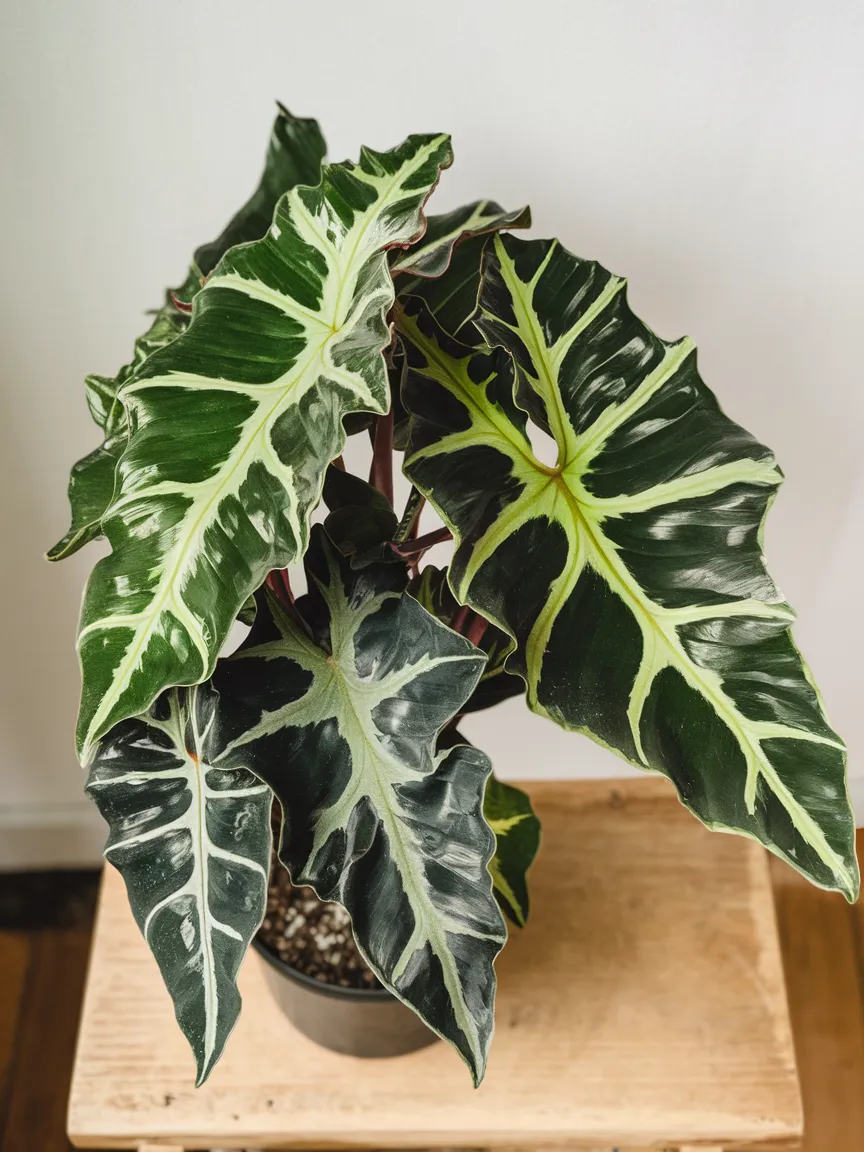
Ideal Growing Conditions for Alocasia Polly
Alocasia Polly thrives in specific conditions that mimic its native habitat. First, the right light is crucial. It prefers bright, indirect sunlight. Too much direct light can scorch its leaves, while too little can hinder growth. Therefore, placing it near a window with filtered light is ideal.
Temperature and Humidity
Temperature greatly affects the health of Alocasia Polly. It enjoys temperatures between 65°F and 80°F (18°C – 27°C). Sudden temperature drops can stress the plant. Likewise, humidity levels need attention. Alocasia Polly flourishes in high humidity, ideally between 60% to 80%. To enhance humidity, consider using a humidifier or placing a tray of water nearby.
Watering Preferences
When it comes to watering, balance is key. Overwatering can lead to root rot, while underwatering causes leaf wilting. Water the plant when the top inch of the soil feels dry. During the growing season, regular watering is essential. Conversely, reduce watering in the winter months. It’s best to ensure proper drainage to maintain healthy roots.
Soil Requirements
Alocasia Polly needs a well-draining potting mix. A blend of potting soil, perlite, and orchid bark works effectively. This mixture facilitates drainage and aeration, preventing water from pooling around the roots. Consider repotting every couple of years to refresh the soil and promote growth.
Fertilization
Fertilizing Alocasia Polly can boost growth. Use a balanced liquid fertilizer once a month during the growing season. This practice promotes lush foliage and robust health. However, avoid fertilizing in the winter as the plant enters dormancy.
| Growing Conditions | Ideal Conditions |
|---|---|
| Light | Bright, indirect sunlight |
| Temperature | 65°F – 80°F (18°C – 27°C) |
| Humidity | 60% – 80% |
| Watering | When top inch of soil is dry |
| Soil | Well-draining potting mix |
By maintaining these ideal conditions, Alocasia Polly will flourish and become a stunning addition to your home.
Plant Care and Maintenance
Alocasia Polly thrives in bright, indirect light. Ideally, place it near a window, but avoid direct sunlight. Too much sun can scorch the leaves. Additionally, ensure your plant receives enough humidity, as it prefers a humid environment.
Watering
Water your Alocasia Polly thoroughly, allowing the top inch of soil to dry out between waterings. Overwatering can lead to root rot. Conversely, underwatering will cause the plant to wilt.
Soil Requirements
Use a well-draining potting mix. A blend of potting soil, perlite, and peat moss works well. This mixture allows for adequate drainage while retaining some moisture.
Feeding
During the growing season, feed your Alocasia Polly with a balanced liquid fertilizer every month. In winter, reduce feeding frequency. Plants do not require fertilizer when dormant.
Pruning
Regularly remove yellow or dead leaves for healthier growth. Clean the leaves gently with a damp cloth to enhance photosynthesis. Pruning helps maintain the plant’s overall appearance.
Pest Control
Watch for common pests such as spider mites and aphids. Treat infestations promptly with insecticidal soap or neem oil. Regularly inspect your plant to ensure it stays healthy.
Repotting
Repot your Alocasia Polly every couple of years to refresh the soil and accommodate growth. Choose a pot only slightly larger than the current one. Moving to a significantly larger pot can hinder growth.
- Ensure proper light conditions for optimal growth.
- Monitor watering closely to avoid over or under-watering.
- Provide humidity through misting or a humidifier.
- Regularly inspect for pests to maintain health.
- Prune as needed to keep a desirable appearance.
Alocasia Polly can be a stunning addition to your home. By following these care tips, it can thrive and offer beautiful foliage.
Propagation Techniques for Alocasia Polly
Alocasia Polly is a striking plant known for its decorative leaves and ease of propagation. There are several methods to propagate this plant successfully. Understanding these techniques will help you expand your collection efficiently.
Soil Propagation
Begin by selecting a healthy Alocasia Polly plant. Carefully remove a section of rhizome from the main plant. Ensure that each division has at least one healthy leaf and roots. Next, prepare a well-draining potting mix. Place the rhizome in the soil, burying it lightly. Water the soil thoroughly but avoid waterlogging. Keep the newly planted rhizome in a warm, humid environment.
Water Propagation
This method allows you to observe root development. To start, take a clean cutting of the rhizome with a leaf attached. Submerge the cutting in a glass of water, ensuring that only the bottom is submerged. Change the water every few days. This keeps it fresh and oxygenated. Roots will begin developing within a few weeks. Once roots measure a few inches, transfer the cutting to soil.
Division
Division is a common technique regarding the Alocasia Polly. This method works best for plants that have become pot-bound. Gently remove the plant from its container. Carefully separate the root ball into smaller sections, ensuring each has leaves and roots. Repot the divisions into separate pots filled with quality potting mix. Water the divisions lightly and place them in indirect sunlight.
Each propagation method offers unique benefits. Choosing the right approach depends on your preference and resources. Alocasia Polly thrives with proper care during propagation. Monitor your cuttings closely, ensuring they maintain humidity and adequate light. With time, you’ll succeed in growing your own healthy Alocasia Polly plants.
Common Problems and Solutions
Alocasia Polly, known for its stunning leaves, can occasionally face issues. Proper care helps prevent these problems. Here are some common issues and their solutions:
1. Yellowing Leaves
One common issue with Alocasia Polly is yellowing leaves. This occurs due to overwatering or poor drainage. To resolve this, ensure the pot has drainage holes. Also, check the soil moisture before watering. If the soil feels damp, wait before watering again.
2. Browning Leaf Edges
Browning on leaf edges often indicates low humidity. Alocasia Polly thrives in high humidity. To fix this, consider misting the plant regularly. Additionally, placing a humidifier nearby can significantly help improve humidity levels for your Alocasia Polly.
3. Pests
Pests such as spider mites and aphids can affect Alocasia Polly. Regularly inspect your plant for any signs of pests. If found, treat with insecticidal soap or neem oil. Natural solutions can effectively remove these pests.
4. Wilting Leaves
Wilting leaves can signify underwatering. Check the soil; if it’s dry, provide water. Always ensure your Alocasia Polly has consistent moisture but never soggy soil. Adjust your watering schedule based on the season, ensuring it is suitable for its growth.
5. Root Rot
Overwatering can lead to root rot, a serious issue for Alocasia Polly. Signs include stunted growth or mushy roots. To prevent root rot, always use well-draining soil. Furthermore, choose a pot that suits its roots without being overly large.
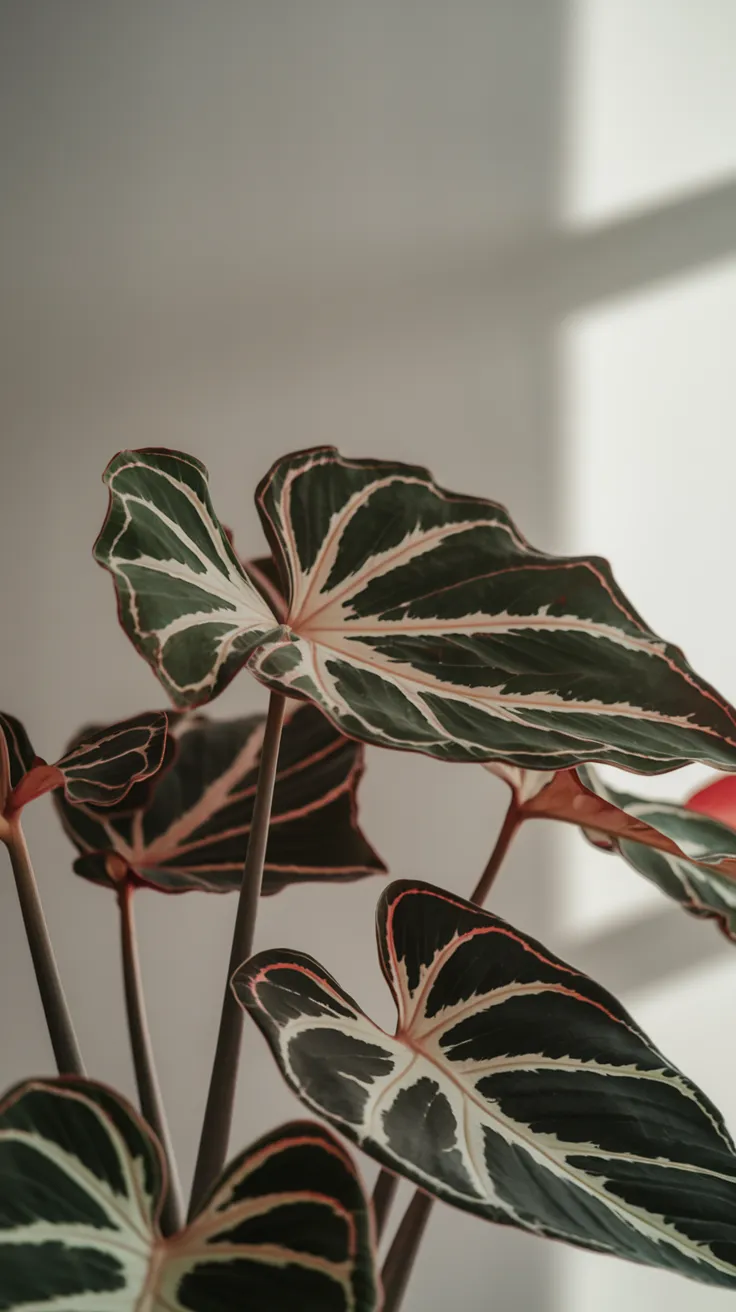
Quick Reference Table: Common Problems and Solutions
| Problem | Symptoms | Solution |
|---|---|---|
| Yellowing Leaves | Leaves turn yellow, usually from excess moisture | Reduce watering, ensure drainage |
| Browning Leaf Edges | Leaf edges are brown and crispy | Increase humidity, mist leaves |
| Pests | Visible insects on leaves | Apply insecticidal soap |
| Wilting Leaves | Leaves appear droopy | Check soil moisture, water if dry |
| Root Rot | Mushy roots, stunted growth | Use well-draining soil, reduce watering |
By addressing these common issues promptly, your Alocasia Polly can thrive beautifully. Regular maintenance and observation are key to preventing these problems.
Seasonal Care Adjustments
Alocasia Polly thrives with specific care adjustments according to the seasons. During spring and summer, it prefers warmer temperatures and higher humidity levels. Thus, ensure your plant receives adequate light without direct sun exposure. Additionally, water regularly but do not overwater, as it can lead to root rot.
In fall and winter, the care routine changes slightly:
- Reduce watering frequency to prevent over-saturation.
- Keep the plant in a well-lit area but away from cold drafts.
- Consider using a humidifier if indoor air becomes too dry.
- Monitor the temperature; ideally, maintain it above 60°F (15°C).
Also, watch for any signs of stress, such as yellowing leaves. Adjust your care accordingly to keep your Alocasia Polly healthy throughout the year.
Microclimate Setup Tips
Creating the right microclimate for your Alocasia Polly is essential for its health.
These exotic plants thrive in conditions that mimic their natural tropical habitat. To achieve the best results, consider the following tips:
- Humidity: Alocasia Polly prefers a humidity level between 60% and 80%. Use a humidifier to maintain this level. Alternatively, mist the leaves regularly.
- Temperature: Keep the temperature between 65°F and 80°F. Avoid cold drafts and sudden temperature fluctuations.
- Light: This plant enjoys bright, indirect sunlight. Too much direct sun can scorch the leaves. Place it near an east or north-facing window.
- Water: Water the Alocasia Polly when the top inch of soil feels dry. Ensure proper drainage to prevent root rot.
- Soil: Use a well-draining potting mix. A blend of peat moss, perlite, and orchid bark works well.
- Fertilization: Feed your plant with a balanced fertilizer every month during the growing season for optimal growth.
By ensuring proper care and maintenance, your Alocasia Polly will thrive and bring a touch of tropical beauty to your home.
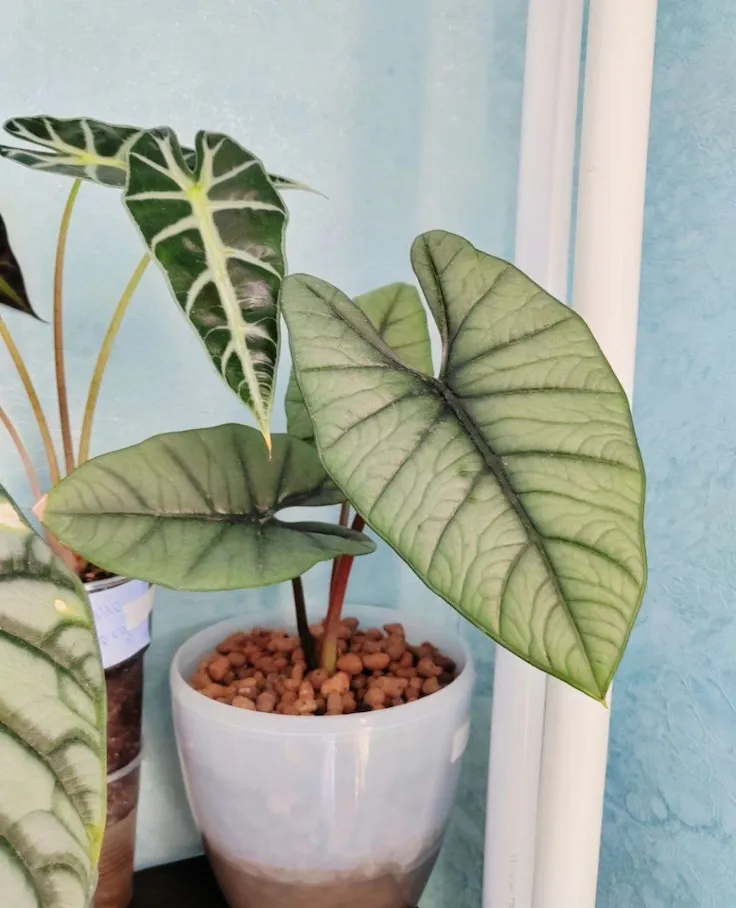
Frequently Asked Questions
Alocasia Polly is a stunning houseplant admired for its unique leaves. People often have questions about its care and requirements. One common question is about watering. It’s crucial not to overwater Alocasia Polly. The plant prefers its soil to dry slightly between waterings. Therefore, always check the top inch of soil before watering.
Another frequent question concerns light conditions. Alocasia Polly thrives in bright, indirect light. However, it can tolerate some low-light conditions too. Just be mindful that insufficient light can stunt its growth.
People also ask about humidity needs. Alocasia Polly loves humidity. Ideally, 60% or higher humidity levels are best. To increase humidity, consider using a humidifier or pebble trays.
Lastly, many inquire about fertilization. During the growing season, apply a balanced fertilizer every four to six weeks. This practice encourages healthy growth and vibrant leaves. Remember, these plants can be sensitive to over-fertilization, so use it sparingly.
Summary and Recommendations
Alocasia Polly is a striking houseplant known for its unique arrow-shaped leaves. These leaves feature prominent venation and a captivating green color. This plant requires bright, indirect light to flourish. Additionally, it enjoys high humidity levels, which can be achieved through regular misting or a pebble tray method.
To maintain optimal health, water Alocasia Polly when the top inch of soil feels dry. Avoid overwatering, as this plant is sensitive to root rot. Fertilizing every month during the growing season promotes robust growth.
Place Alocasia Polly in well-draining soil to prevent water retention issues. Furthermore, repotting is essential when the plant outgrows its container. Regularly cleaning the leaves helps maintain their vibrancy and removes dust.
In summary, Alocasia Polly makes a superb addition to any plant collection. With proper care, it thrives and displays stunning foliage. Be attentive to its needs, and you will enjoy its beauty for years to come.






